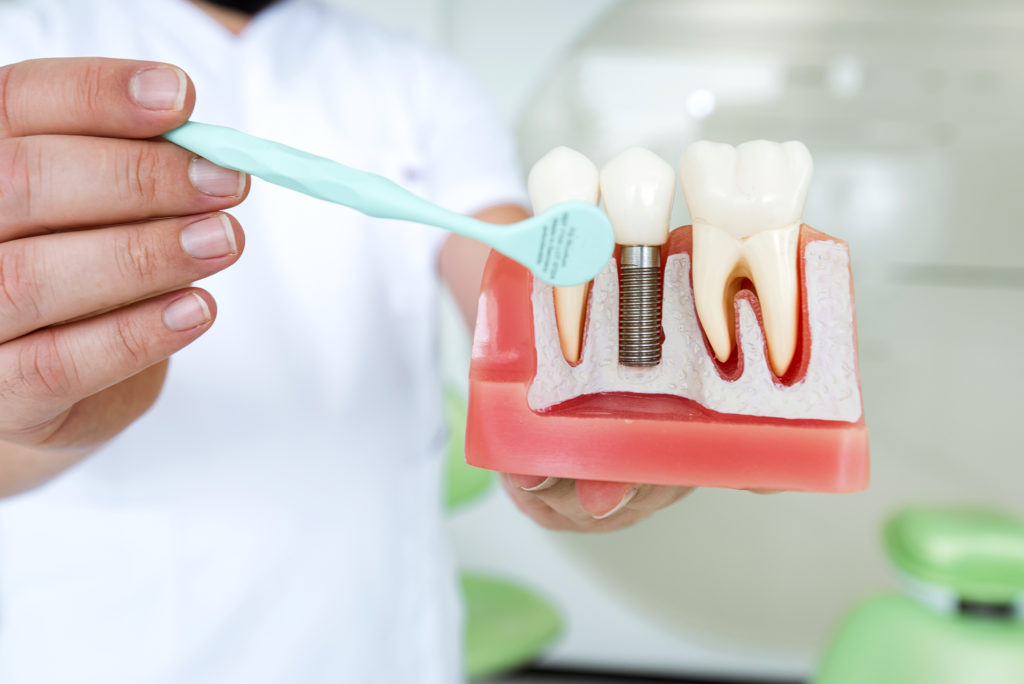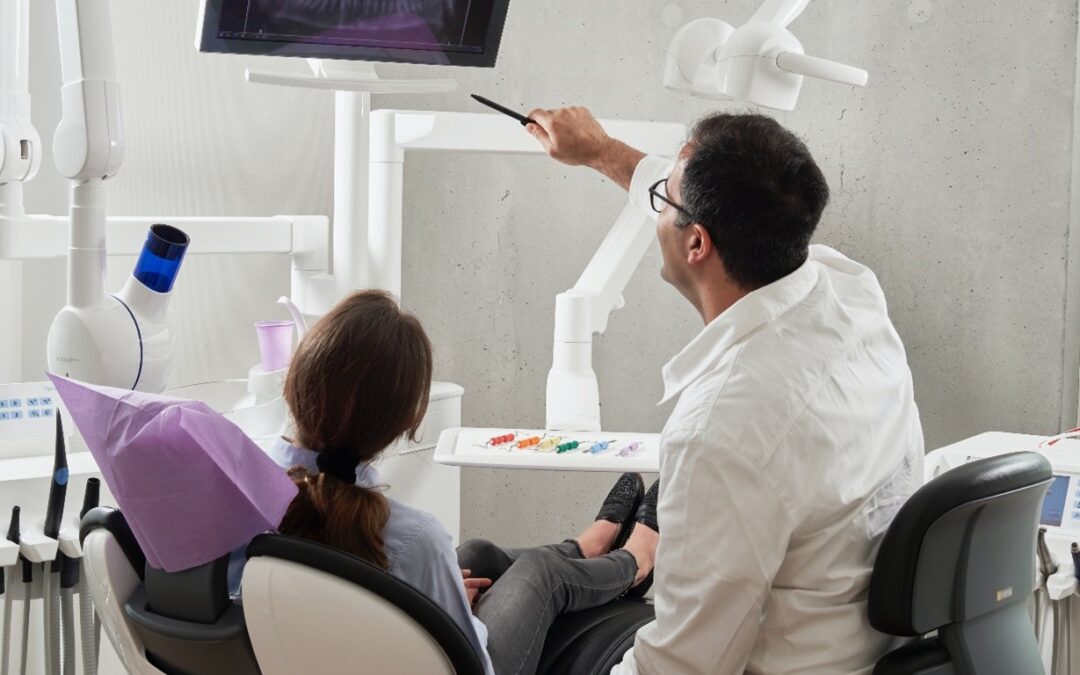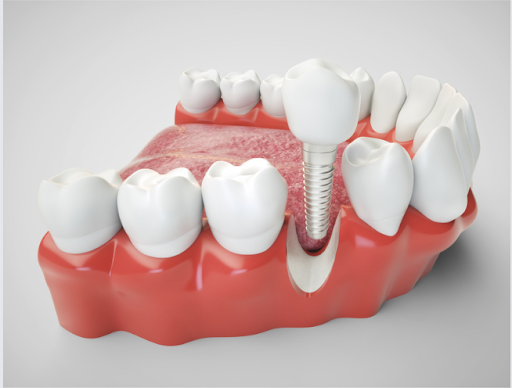One aspect of dentistry that has undergone tremendous improvements due to 3-D technology is tooth replacement with dental implants. All aspects of the implant procedure have been impacted by advancements in CBCT imaging and CAD/CAM design.
How dentists approach diagnosis, treatment planning, surgical procedure, and restoration with this technology in hand has improved patient experience and outcomes. Before we can share with you how technology is making the implant experience better, we need to paint a picture of what the traditional dental implant experience is for a patient.
How Traditional Dental Implant Procedures Work
Dental implants are titanium screws that take the place of a missing tooth root. Implants remain the most effective, longest-lasting tooth replacement option available.
Dental implant procedures require several steps.
The titanium material of the screw is the key component. Bone has an affinity for titanium. Once Dr. Fienman places the titanium, bone will grow into the grooves of the implant, locking it in place. This creates a stable foundation for your new crown.
From beginning to end, traditional dental implant procedures typically take at least 3 months or closer to 6 months. Some may take longer, depending on whether or not you need an extraction, bone graft, or both. In some cases, a dental implant can be placed the same day as the extraction, known as an “immediate implant,” but in other situations, you may have to wait for the extraction to heal.
The first step is a screening and consultation, where Dr. Fienman will examine, measure, and evaluate your mouth and jaw to determine if a dental implant is indeed the right solution for you. The main factors are to determine the appropriate space and bone available to accommodate the dental implant. In the event that the bone in the applicable area has worn away, he may recommend a bone graft in order to add bone to accommodate the new implant.
Once it is determined that a dental implant is the ideal solution to replace your missing tooth or teeth and there is an ideal bone available to accommodate the new dental implant, a surgery day will be set.

A titanium dental implant acts as an artificial root for your new tooth.
When the day of surgery arrives, you will be numbed up with local anesthetic similar to any other dental procedure. A small incision will be made in your gums to access the bone. A pilot home will be drilled to allow for placement of the new titanium dental implant that will act as an artificial root for your new tooth. A stitch is placed, and the implant is left to heal under the gums for 3-6 months.
After the appropriate healing period, you will return to our office for the implant to be accessed and impressions taken for your new crown. In a matter of weeks, you will have your new crown and be able to enjoy eating and smiling again.
These are the traditional steps to implant placement. Dental implants are highly successful therapy to replace missing teeth.
In our next blog we will share with you how 3-D technology and guided implant surgery is making the whole process safer, faster, more predictable, and more comfortable for our patients.
See our website for details about these or other medical procedures. To make an appointment with Dr. Fienman, send us a message online or call our office, located on Maple Road in West Bloomfield.



